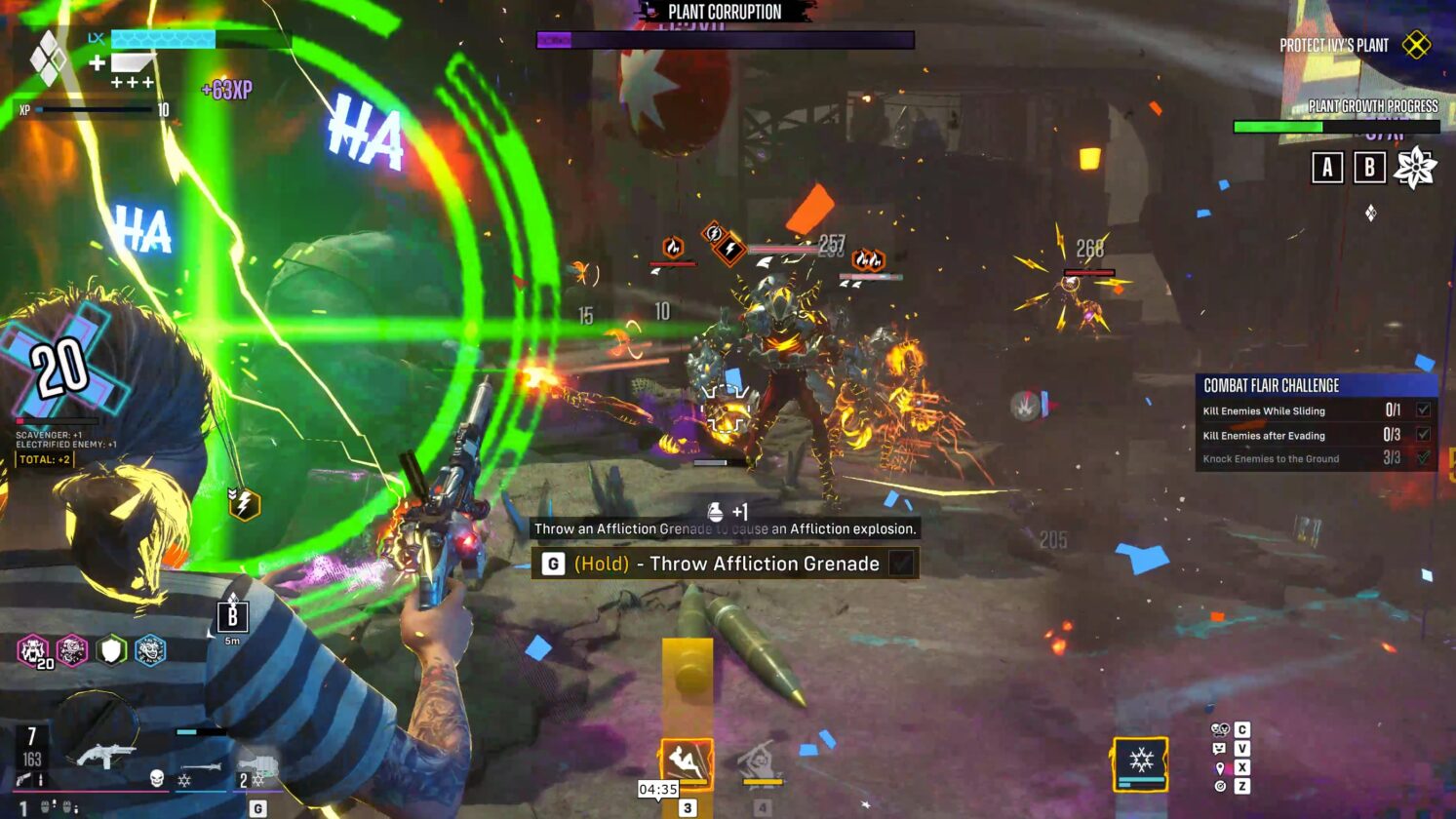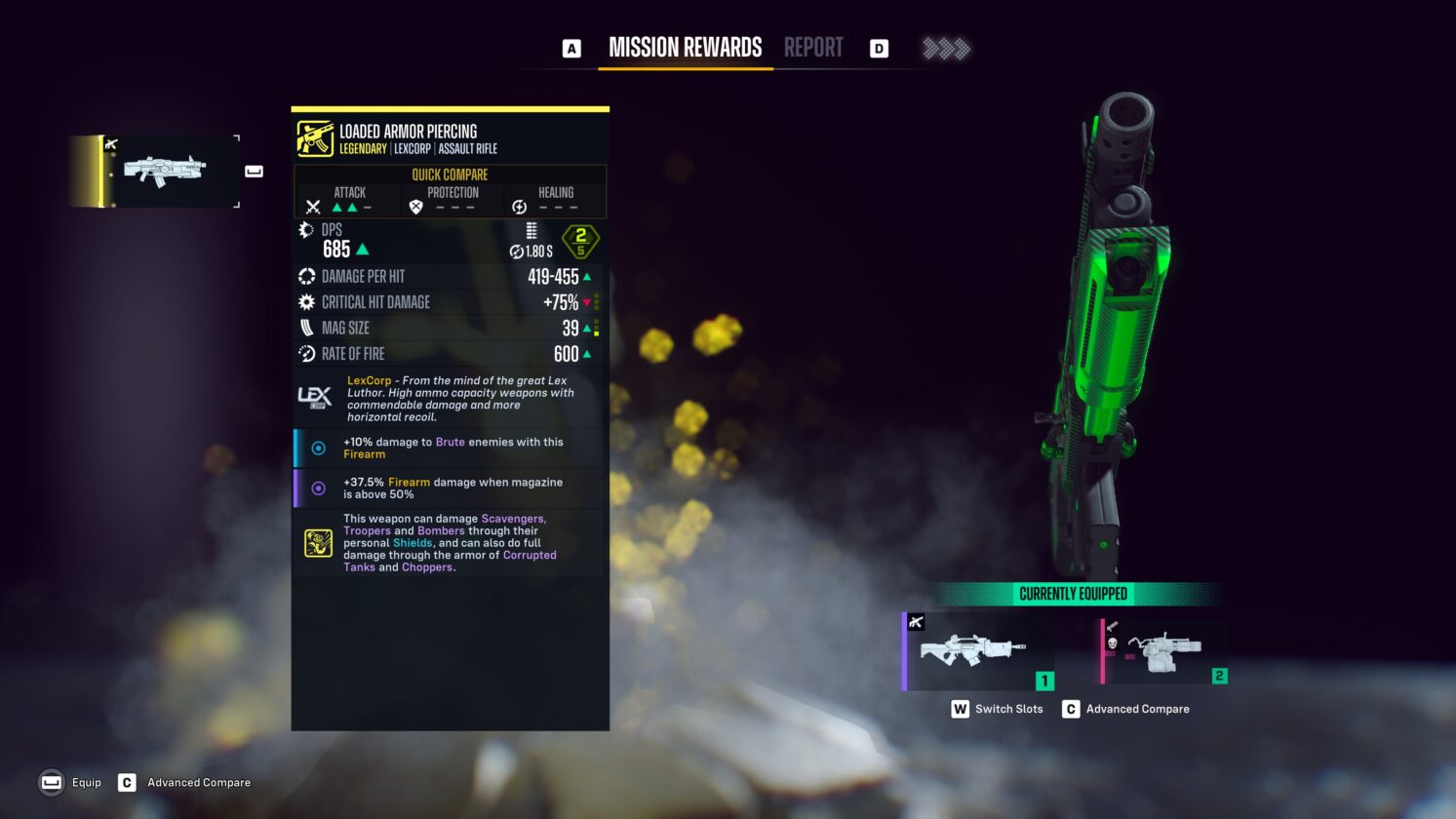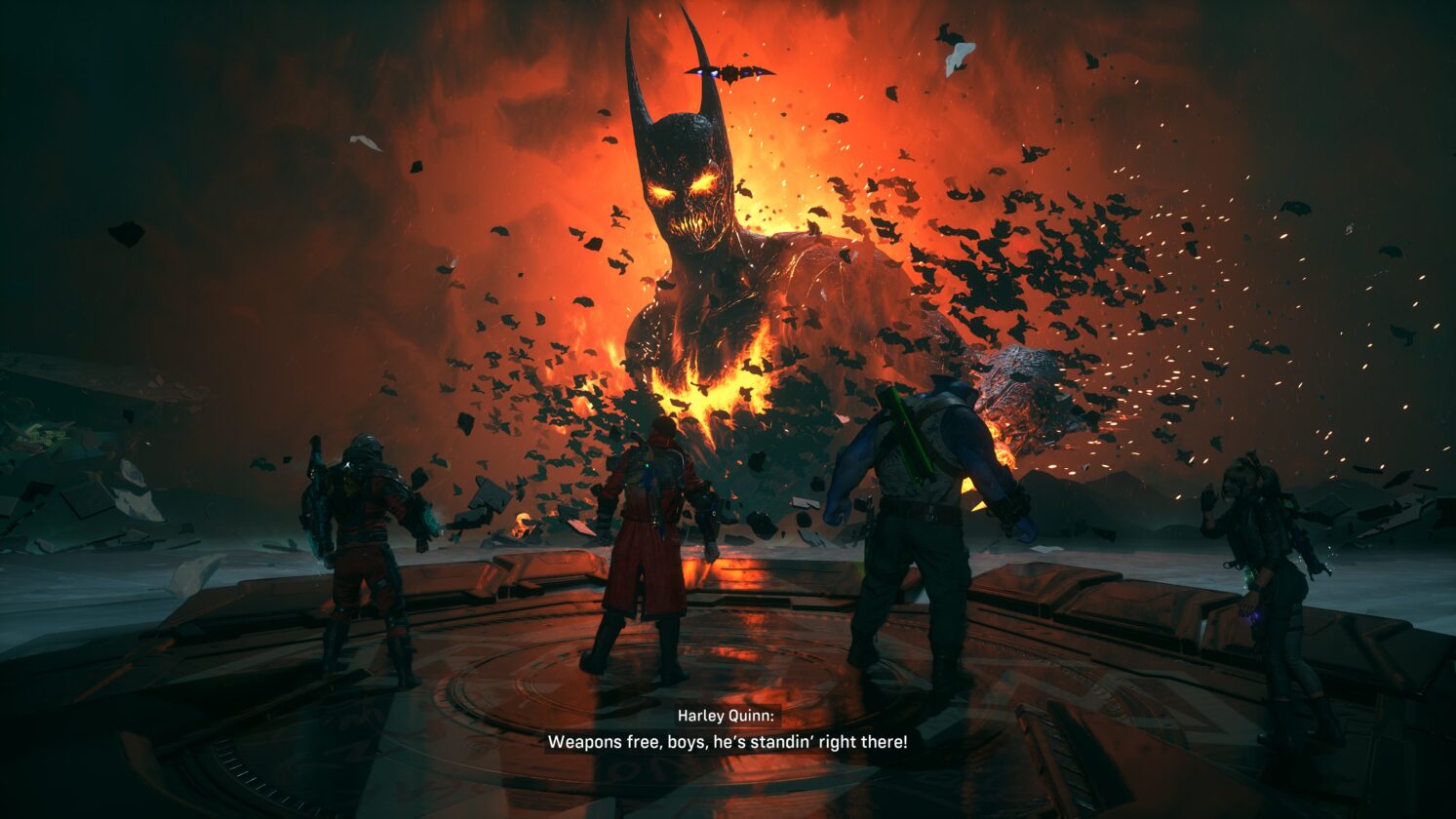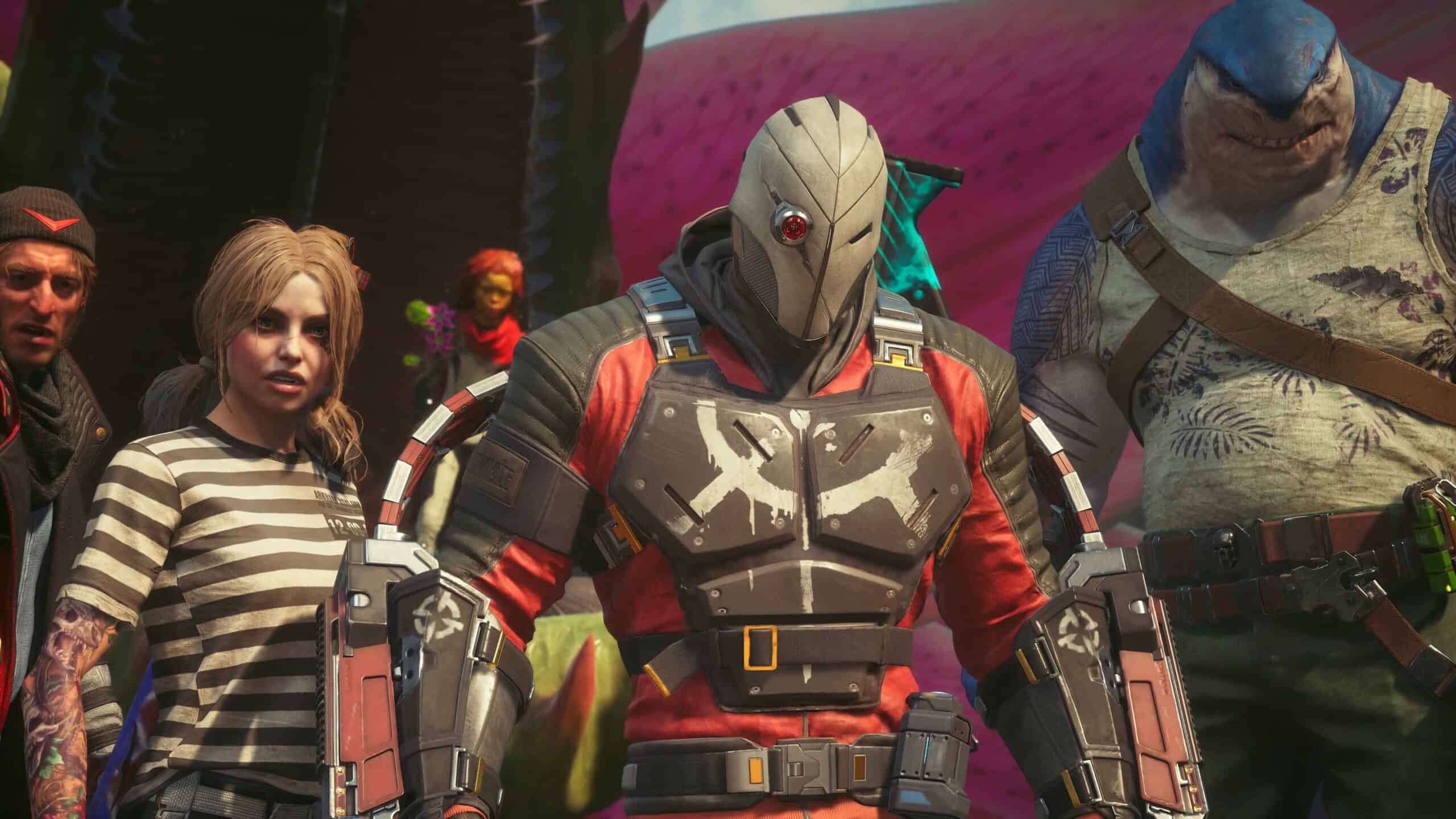Rocksteady had some pretty big shoes to fill with Suicide Squad: Kill the Justice League, thanks to the massive legacy left behind by their seminal Arkham trilogy that not only delivered one of the greatest superhero games of all time but also spun up a whole new combat system that is to this day being used by numerous AAA titles.
With a development time of around eight years and almost two years of delays since its original intended release date, Suicide Squad Kill The Justice League (KTJL) finally hit the shelves. Unfortunately, Rocksteady’s dive into a game design they have no experience with didn’t pay off. Despite having a great narrative hook (albeit a polarizing one), Suicide Squad KTJL fails to stick the landing and misses almost every mark people expect from a full $70 AAA title, let alone one expected from a studio of Rocksteady’s caliber. A big chunk of that can easily be blamed on the live service structure of the game, once again proving that the current era of live service shoved into narrative experiences needs to die.

It is understandable why the developers went with the live-service looter shooter hook; after all, its development started when live-service games were all the rage (not that they were good even back then), and by the time the audience showed how much they hate this genre, it was obviously very late to transition. So, that one decision, made probably very early in the development cycle, ends up being the major downfall of this game. However, even in live service games, you can have some salvageable parts, especially when it comes to playing different characters. The offering of changes in playstyle always entices people to come back for more. Marvel’s Avengers, another comic book based live service game made by a developer with their roots in singleplayer titles, is the perfect comparison in this situation.
Despite its countless shortcomings, there is no denying that Avengers delivered a fun singleplayer story and enough diversity in playstyles from different characters. Unfortunately, Suicide Squad: Kill The Justice League lacks even that, mainly because of the gameplay front with its story struggling with cohesion and fun factor, mostly down to its mission structure, or lack thereof. Instead of being epic set pieces, it is almost impossible to distinguish the main campaign missions from open-world sidequests in Kill The Justice League.

Suicide Squad offers just a handful of mission styles against one enemy faction: destroy incubators, rescue people, kill a certain number of enemies, etc, and you continue to play them again and again. The first mission you do for Poison Ivy, a main campaign mission, is the exact same as other side quests you do for her, with just the location and reward differing.
On top of that, character differences in Suicide Squad pretty much just boil down to their appearances, traversal, and the two unique skills they have. Apart from that, every character plays out pretty much the same way, and the talent tree feels just like the standard percentage buffs you see in typical live-service looter shooters instead of offering diverse playstyles with different skills you can use in combat. You could be a great player but without that legendary gun that drops as random loot and has randomized stats, you won’t be feeling much of a difference in how combat encounters play out.
What makes this whole experience of chasing down better loot even more frustrating is how frequently the reward screen is forced on you with its slow animations that reveal weapons which are in most cases going to be worse than what you already have, because that is how RNG works in live service games. You could be in a main story mission, a cutscene pops up and you have help a character who is hurt.
At this point the mission ends but instead of progressing the story due to the urgency of the situation, the game greets you with a loot screen that shows what rewards you earned, how much XP you gained and your overall performance. This constant cutscene/mission to reward screen transition is one of the worst immersion breaking experiences I have had in games.

Amanda Waller is bleeding out and I have to help her up. But first let me go through this reward screen with unskippable animations.
Speaking of characters, one thing that can’t be denied is how amazing the performances (including the visual aspects of it, facial expressions and all) are from every character. Tara Strong and the late Kevin Conroy, as always, deliver top-notch work as Harley Quinn and Batman. Every other performance also deserves accolades, especially Wonder Woman (miles ahead of Wonder Woman we have seen in the live-action movies) and Harley Quinn. However, despite some great voice work, the material some of these characters have to work with is a bit off-putting, and character behaviors swing like a weird pendulum.
Sure, after seeing the Suicide Squad animated movies or James Gunn’s Suicide Squad (we don’t talk about the other one), most would understand the type of people the squad is filled with. These are not good guys, nor do you want them to be. However, there are some instances in Kill the Justice League that make you question even a bad guy’s thought process, let alone characters who are supposed to be anti-heroes, and you are sort of supposed to root for them. Over the course of the game, you are supposed to see some sort of growth in their characters instead of pure selfishness.

They might have gotten stuck in this situation unwillingly, but that doesn’t mean they are monsters who would rather watch everyone in the world burn. Unfortunately, despite that growth, suddenly, for shock value and dark humor, at certain points in the game, all that character development is thrown out the window and makes these characters do something that feels incredibly out of character. This is further worsened by the fact that shortly after such instances, those characters change their behavior again. This lack of proper commitment to character development just feels off coming from a studio like Rocksteady.
Since the game is all about killing the Justice League, these god-tier superheroes, one would expect this angle to lead to showdowns of epic proportions. However, among the myriad of issues with Kill the Justice League, boss fights sit near the top. The repetitive nature of boss battles against the Justice League members becomes tedious quickly.
Rather than have a strategy involved for each fight, the actual combat section against members of the League basically just dumbs down to running around until the Counter icon appears on them, and you press a button to weaken them and then start spraying bullets. The Green Lantern fight plays a bit differently, but in essence, it follows the same formula: just keep shooting mindlessly.

The worst offender in this case is the fight against Batman. While the other sections involving Batman in Suicide Squad are extremely cool, you being on the receiving end of his hunt and all as he stalks you through dark places that are reminiscent of Predator sections from the Arkham trilogy. Unfortunately, the actual boss fight against Batman is anything but. He is a massive bullet sponge, and all you do is empty your weapons while standing in one place, occasionally jumping over a flame wave. It is straight-up embarrassing how low effort this section is designed to be.
Then there is the rogues gallery. If you know Amanda Waller, you know that these four squad members aren’t the only ones under her thumb. Suicide Squad: Kill The Justice League features a host of other notable characters from the DC universe, such as Rick Flag, Poison Ivy, and Penguin. However, despite such big names from the Rogue gallery, you would expect them to have some substantial material in the game. Unfortunately, that is another instance where KTJL’s live service game design rears its ugly head.
Every side character in the game is nothing more than a vendor NPC in your base of operations. Despite the game calling them Support Squad members, they don’t offer anything else besides shop and crafting services. The side quests that you can do for these characters also follow the aforementioned mission structure with no narrative and only function to expand the inventory for these characters. You are either destroying incubators, protecting Ivy’s plants, or rescuing civilians.

Sadly, the open-world side content apart from these quests isn’t any better either. Riddler challenges, one of the highlights of Arkham games, make a return. Unfortunately, if someone was looking to solve some exciting puzzles again to collect these Riddler trophies, they are out of luck. Riddler activities are divided into three types: “solving” a riddle, finding trophies, or completing timed challenges. For the first type, you have to find stuff like a monument or building and basically take a picture of it. For trophies, just pick them up from the open world like a loot box, and timed challenges are all traversal activities where you need to run through checkpoints in a specific time period to unlock new cosmetics.
This lackluster and limited content variety continues in the “endgame” of Suicide Squad: Kill The Justice League as well, which frankly is the most flimsy live-service offering I have seen in any game since the first Destiny launched, and the entire genre pretty much blew up. As expected, the main campaign of Suicide Squad KTJL just ends in a pretty abrupt way, all to pave the way for the real bad guy and story to continue in the live service missions and future seasons of the game. If the upcoming first season of Kill The Justice League doesn’t add a substantial amount of content, I don’t see how the game will keep players interested for subsequent seasons.
From a technical standpoint, Suicide Squad: Kill The Justice League delivers a fairly solid package. The graphics menu leaves a lot to be desired sure but the game performance is pretty decent. While using Raytracing is completely off the table in this game even for a 4090, I easily managed 60+ FPS with max settings at 4K at DLSS Quality on a 4070 Ti. However, that is not to say the performance is buttery smooth. While you may not notice frame dips, there are a fair number of frame time spikes, especially during hectic combat that can make or break the experience for you.

While the Metropolis playground of Suicide Squad KTJL might be visually impressive thanks to the advancement in tech since 2015, it lacks any real identity due to the art design. Gotham’s streets, Ace Chemicals, GCPD, Amusement Mile; everything stands out if you look at the world of Arkham trilogy. For the most part, Metropolis feels like any standard AAA game city. Even after 25 hours in the game, I can’t really distinguish its neighborhoods from each other.
In conclusion, Suicide Squad: Kill The Justice League can offer a couple of hours of fun through its campaign but the price tag makes it an extremely hard sell when the campaign is less than 10 hours long. If the future seasons of the game add substantial content for the game then perhaps after 2-3 seasons it can be a fun title to grab to play with friends if you are looking for a standard looter shooter experience but as a singleplayer experience, the offering here is so flimsy that you are better off waiting for a massive sale, even after the first year’s content is released.
